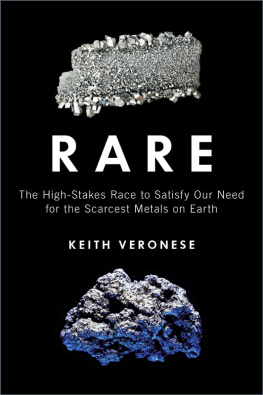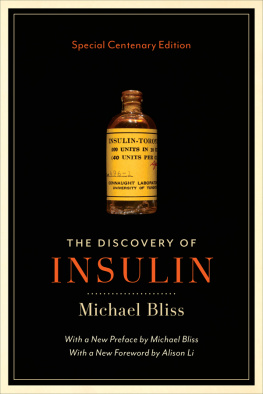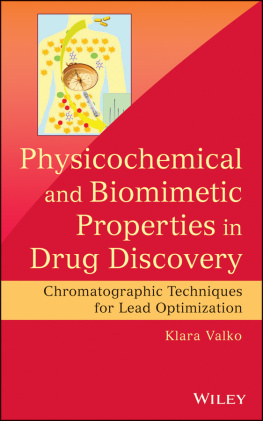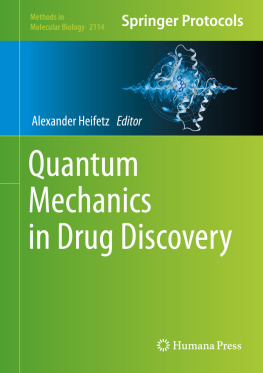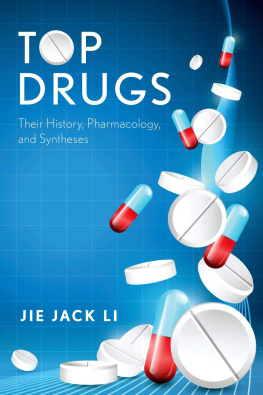Keith Veronese - Making Medicine: Surprising Stories from the History of Drug Discovery
Here you can read online Keith Veronese - Making Medicine: Surprising Stories from the History of Drug Discovery full text of the book (entire story) in english for free. Download pdf and epub, get meaning, cover and reviews about this ebook. year: 2022, publisher: Prometheus, genre: Romance novel. Description of the work, (preface) as well as reviews are available. Best literature library LitArk.com created for fans of good reading and offers a wide selection of genres:
Romance novel
Science fiction
Adventure
Detective
Science
History
Home and family
Prose
Art
Politics
Computer
Non-fiction
Religion
Business
Children
Humor
Choose a favorite category and find really read worthwhile books. Enjoy immersion in the world of imagination, feel the emotions of the characters or learn something new for yourself, make an fascinating discovery.

- Book:Making Medicine: Surprising Stories from the History of Drug Discovery
- Author:
- Publisher:Prometheus
- Genre:
- Year:2022
- Rating:4 / 5
- Favourites:Add to favourites
- Your mark:
- 80
- 1
- 2
- 3
- 4
- 5
Making Medicine: Surprising Stories from the History of Drug Discovery: summary, description and annotation
We offer to read an annotation, description, summary or preface (depends on what the author of the book "Making Medicine: Surprising Stories from the History of Drug Discovery" wrote himself). If you haven't found the necessary information about the book — write in the comments, we will try to find it.
Keith Veronese: author's other books
Who wrote Making Medicine: Surprising Stories from the History of Drug Discovery? Find out the surname, the name of the author of the book and a list of all author's works by series.
Making Medicine: Surprising Stories from the History of Drug Discovery — read online for free the complete book (whole text) full work
Below is the text of the book, divided by pages. System saving the place of the last page read, allows you to conveniently read the book "Making Medicine: Surprising Stories from the History of Drug Discovery" online for free, without having to search again every time where you left off. Put a bookmark, and you can go to the page where you finished reading at any time.
Font size:
Interval:
Bookmark:


An imprint of Globe Pequot, the trade division of
The Rowman & Littlefield Publishing Group, Inc.
4501 Forbes Boulevard, Suite 200, Lanham, Maryland 20706
www.rowman.com
Distributed by NATIONAL BOOK NETWORK
Copyright 2022 by Keith Veronese
All rights reserved. No part of this book may be reproduced in any form or by any electronic or mechanical means, including information storage and retrieval systems, without written permission from the publisher, except by a reviewer who may quote passages in a review.
British Library Cataloguing in Publication Information Available
Library of Congress Cataloging-in-Publication Data
Names: Veronese, Keith, author.
Title: Making medicine : surprising stories from the history of drug discovery / Keith Veronese.
Description: Lanham : Rowman & Littlefield, 2022. | Includes index. | Summary: In Making Medicine: Surprising Stories from the History of Drug Discovery, author Keith Veronese examines fifteen different molecules and their unlikely discoveryor, in many cases, their second discoveryen route to becoming invaluable medicationsProvided by publisher.
Identifiers: LCCN 2021052258 (print) | LCCN 2021052259 (ebook) | ISBN 9781633887534 (cloth) | ISBN 9781633887541 (epub)
Subjects: LCSH: Drug development. | DrugsResearchHistory. | DrugsDesign.
Classification: LCC RM301.25 .V47 2022 (print) | LCC RM301.25 (ebook) | DDC 615/.19dc23/eng/20211025
LC record available at https://lccn.loc.gov/2021052258
LC ebook record available at https://lccn.loc.gov/2021052259
 The paper used in this publication meets the minimum requirements of American National Standard for Information SciencesPermanence of Paper for Printed Library Materials, ANSI/NISO Z39.48-1992.
The paper used in this publication meets the minimum requirements of American National Standard for Information SciencesPermanence of Paper for Printed Library Materials, ANSI/NISO Z39.48-1992.
For Carla, Emelyn, and Ariana
Disclaimer: This book does not provide medical advice. I am not holding myself out to be a doctor/physician or any other type of medical professional. The information in this book is not intended or implied to be a substitute for professional medical advice, diagnosis, or treatment by a health care professional. This book does not provide medical advice. Please seek the care of a health care professional should you have a question about a medical condition or treatment. Neither the author nor the publisher are liable for risks or issues associated with acting on information in this book. Never disregard professional advice or delay seeking medical treatment because of something you have read in this book. This book is for informational purposes only.
How do scientists design the pharmaceuticals we use to improve our lives? A handful are happy accidents and overlooked mixtures of carbon and hydrogen that become million- and billion-dollar makers for corporations. They also improve the lives of people the world over in the process. While the unintended discoveries in the chapters that follow may appear miraculous, drug discovery, under normal conditions, is a very laborious and rational undertaking. At the core of modern, rational drug discovery is the leveraging of multiple fields together to make one wondrous event happenthe binding of a molecule in the body to relieve a pain, erase an inconvenience, or cure a disease.
Potential drug targets play a role in a disease state, but they do not have to cause the disease themselves. The positive modification of a drug target, in theory, should result in a biological change (e.g., the breakdown of a cell signaling pathway) that halts the disease or acute problem at hand. How does this modification occur? Its all about binding, the act of two structures, the drug (often a small molecule) and the target, coming together in hope that a promising result occurs. What is a small molecule? For the purpose of drug design, it is the product of a reproducible chemical reaction that scientists aim to be 500 daltons or less in size. A dalton is a unit of atomic mass that is one-twelfth the mass of a carbon atom. To give some examples, a molecule of water is a little more than eighteen daltons, sodium chloride (table salt) is fifty-eight and a half daltons, a molecule of the pain reliever ibuprofen is just over 206 daltons, and a molecule of the blood pressure drug losartan is just under 423 daltons. Ibuprofen binds to enormous cyclooxygenase enzymes, stopping the 70,000-dalton enzymes from doing their work and bringing pain relief in a matter of an hour. Not bad for a small molecule of 206 daltons.
Drug design often revolves around the testing of molecules in hopes of finding one that binds to and stops or alters the action of an enzyme or other biological target and results in a positive effect on the body. There are multiple approaches to drug design, with ligand-based and structure-based being at the core.
Ligand-based drug design lacks detailed knowledge of the structure of the biological target of a possible drug, relying only on previous known information about what binds the target. A ligand, by definition, is a molecule that binds to a larger molecule. In drug design, our ligand is a small-molecule drug candidate. By making rational modifications to other molecules known to bind the target, it is possible to create a more effective small-molecule drug even without knowing the exact structure of the target. This is difficult, however, as researchers are essentially flying blind as they synthesize a number of small molecules in hopes that one will perform superior to previous results.
Structure-based drug design is possible when highly detailed information about the shape and atomic composition of the drug target is known. This is often possible when high-resolution x-ray crystallography data exist, data showing the three-dimensional structure of the target through a mesh of electron clouds, or with high-quality nuclear magnetic resonance (NMR) spectroscopy. X-ray crystallography is an art to itself, relying on scientists to grow a crystal of the desired target at high concentrations of protein and then subjecting the fragile crystal to a barrage of x-rays, often at extremely low temperatures. It is not at all uncommon for a crystal to become damaged in the process, setting back months of work. This work is performed merely to obtain the raw data, which must then be meticulously processed before a three-dimensional structure of the crystalized target is revealed. Access to a well-resolved three-dimensional structure opens the doors to computer-aided techniques in drug design and also aids in the high-throughput screening techniques we will learn about next.
High-throughput screening involves scanning libraries of thousands to millions of small molecules in an assay against an established target to see if they can alter the target in any way. An assay is just a fancy word for a test of any type that can qualitatively or quantitatively measure the change in activity of the target. Each small molecule in the library that successfully attains a minimum threshold for activity in the assay is called a hit. These small molecules are often on the scale of 500 or less daltons. Successful hits are screened against other known targets as well to make sure they do not affect them and cause undesirable effects down the line. Due to the sheer size of the small-molecule libraries used in high-throughput screening, testing of compounds is often a job requiring significant automation, with unattended robotic systems capable of assaying and scanning the results of tens of thousands of compounds in a single day. If multiple hits are similar in structure, it is likely that additional small molecules will be synthesized through organic chemistry methods with well-known bioisosteric alterations in hope of further increasing the potency against the target. A bioisostere is a group of atoms that behaves similarly either physically or chemically in biological organisms to another set of atoms. This is part of leveraging the structureactivity relationship between the small molecule and the target to create a better binding event.
Font size:
Interval:
Bookmark:
Similar books «Making Medicine: Surprising Stories from the History of Drug Discovery»
Look at similar books to Making Medicine: Surprising Stories from the History of Drug Discovery. We have selected literature similar in name and meaning in the hope of providing readers with more options to find new, interesting, not yet read works.
Discussion, reviews of the book Making Medicine: Surprising Stories from the History of Drug Discovery and just readers' own opinions. Leave your comments, write what you think about the work, its meaning or the main characters. Specify what exactly you liked and what you didn't like, and why you think so.

